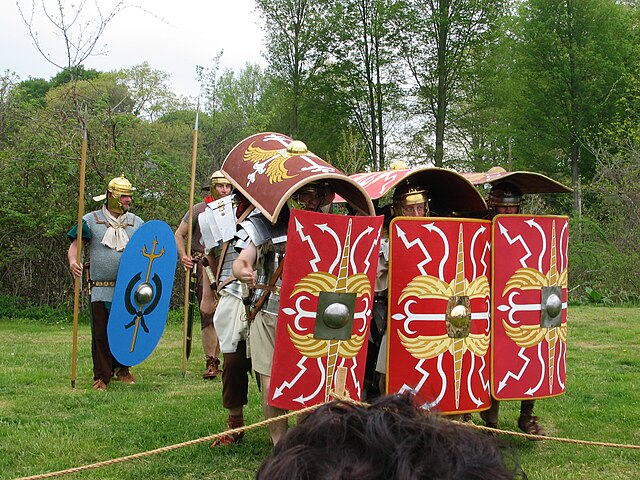A close order formation is a military tactical formation in which soldiers are close together and regularly arranged for the tactical concentration of force. It was used by heavy infantry in ancient warfare, as the basis for shield wall and phalanx tactics, to multiply their effective weight of arms by their weight of numbers. In the Late Middle Ages, Swiss pikemen and German Landsknechts used close order formations that were similar to ancient phalanxes.
Close order formation: Greek hoplites marching in phalanx formation.
In close formation, Swiss pikemen confront Holy Roman imperial cavalry at the Battle of Dornach, 1499.
Prussian infantry in close order linear formation attack at the Battle of Hohenfriedberg, 1745.
Heavy infantry consisted of heavily armed and armoured infantrymen who were trained to mount frontal assaults and/or anchor the defensive center of a battle line. This differentiated them from light infantry who are relatively mobile and lightly armoured skirmisher troops intended for screening, scouting, and other tactical roles unsuited to soldiers carrying heavier loads. Heavy infantry typically made use of dense battlefield formations, such as shield wall or phalanx, multiplying their effective weight of arms with force concentration.
Heavy infantry hoplites of Ancient Greece in phalanx formation
Roman re-enactors demonstrate a variant of the Roman testudo formation
Medieval coat of arms of king Matthias Corvinus of Hungary (r. 1458–1490), guarded by Black Army heavy infantry men. Matthias Church, Budapest. The damaged art relic was renovated in 1893.





